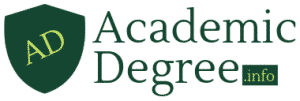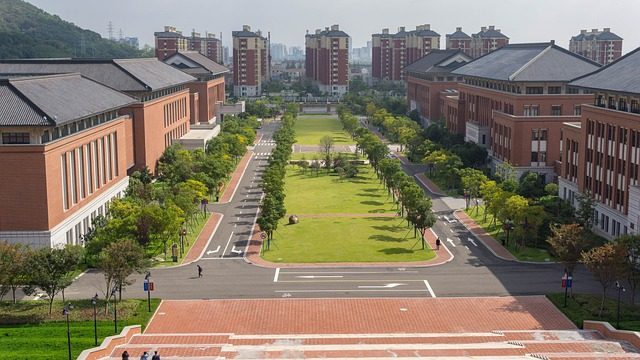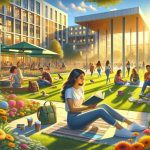Exploring the world’s most remarkable campus buildings reveals a fusion of history, art, and functionality. These structures not only serve educational purposes but also enhance the aesthetic appeal of their surroundings. In this article, we delve into the 25 most amazing campus buildings, highlighting their unique architectural features and the impact they have on student life.
As we navigate through various universities, we will uncover what makes these buildings extraordinary and how they contribute to the overall college experience.
Table of Contents
What makes a campus building amazing?
A campus building can be deemed amazing for several reasons, combining architectural creativity and historical significance. The blend of innovative design and enduring functionality often plays a crucial role in captivating the admiration of students and visitors alike.
For instance, a building that incorporates sustainable practices while showcasing modern technology can significantly enhance its appeal. Moreover, structures that reflect the cultural and historical context of their location often resonate deeply with the academic community.
- Innovative Design: Unique architectural elements that stand out.
- Cultural Significance: Buildings that tell a story or represent local heritage.
- Environmental Sustainability: Structures designed with eco-friendly practices.
- Functional Spaces: Areas that foster collaboration and learning.
Ultimately, the combination of these factors makes a campus building truly remarkable, creating an inviting atmosphere for students and faculty.
How do architectural elements impact campus buildings?
Architectural elements play a vital role in defining the character and functionality of campus buildings. From the choice of materials to the overall layout, these elements contribute significantly to the experience of those who use the spaces.
For example, the use of large windows can enhance natural light, creating a welcoming environment that positively affects student morale. Similarly, open spaces and communal areas encourage collaboration and social interaction among students.
Moreover, the integration of modern technology with traditional designs creates a unique harmony that attracts admirers from all walks of life. This architectural balance is essential for inspiring creativity and innovation within the academic community.
Which universities have the most beautiful campuses?
Many universities around the globe are renowned for their stunning campuses, where beautiful buildings complement lush landscaping. Among these, the University of Bologna stands out not only for its architectural significance but also for its historical importance as one of the oldest universities in the world.
Another notable example is Cornell University, which boasts breathtaking views and a blend of historic and modern structures that create a picturesque academic environment. The Royal Roads University is also admired for its stunning oceanfront location and unique architectural style, making it one of the most beautiful college campuses in Canada.
- University of Bologna: A rich history and stunning architecture.
- Cornell University: Beautiful landscapes and diverse building styles.
- Royal Roads University: A unique coastal campus with impressive structures.
- University of Salamanca: Renowned for its stunning Plateresque architecture.
What are the key features of iconic campus buildings?
Iconic campus buildings often share several key features that contribute to their status. These elements include historical significance, unique architectural styles, and the ability to foster community engagement.
Many of these buildings are designed with aesthetic appeal in mind, using materials that blend seamlessly with the environment. Features such as arches, spires, and large courtyards are common in historic college structures, offering a sense of grandeur.
Additionally, modern campus buildings frequently incorporate sustainable design principles, such as green roofs and energy-efficient systems, making them both visually appealing and environmentally responsible.
How do costs influence campus building designs?
Cost is a significant factor that influences the design and construction of campus buildings. Budget constraints often dictate the materials used and the scale of the project, leading to creative solutions that maximize value.
For instance, universities may opt for less expensive materials that still offer durability and aesthetic appeal. On the other hand, institutions willing to invest in more luxurious finishes often find that these expenditures enhance the overall perception of the campus.
Moreover, the allocation of funds toward sustainable initiatives can lead to long-term savings, as energy-efficient designs reduce operational costs over time. This dual focus on aesthetics and budget considerations shapes the evolution of campus architecture.
What role do campus buildings play in student life?
Campus buildings serve as more than just educational facilities; they are integral to the student experience. These structures provide spaces for collaboration, socializing, and extracurricular activities, fostering a sense of community among students.
For example, student centers often host events and provide resources that facilitate engagement. Libraries are designed not only for studying but also for group projects and discussions, making them essential hubs of academic life.
- Collaboration Spaces: Areas designed for teamwork and group discussions.
- Social Hubs: Buildings that host events and encourage social interaction.
- Study Environments: Libraries and study halls that promote academic success.
Ultimately, the design and functionality of campus buildings significantly impact the overall college experience, shaping how students connect with their peers and engage in their education.
Related Questions about campus buildings
What are beautiful university campuses?
Beautiful university campuses often feature a blend of historic and modern architecture, lush greenery, and thoughtfully designed spaces. These campuses are designed not only for aesthetic appeal but also to enhance the learning environment. Institutions like the University of Salamanca and the University of Bologna exemplify this beauty through their stunning structures and rich history.
What college has the coolest campus?
The “coolest” campus can vary based on personal preference, but universities like Cornell and the Royal Roads University are frequently mentioned for their unique environments. Cornell is known for its breathtaking natural scenery, while Royal Roads offers a stunning coastal backdrop, making both campuses remarkable in their own right.
What are the most impressive college campus buildings?
Some of the most impressive college campus buildings include the Yale University Art Gallery and the Texas A&M Kyle Field. These structures showcase exceptional architectural design and often serve crucial roles in the university’s culture and community.
How does architecture influence student experience?
Architecture profoundly influences the student experience by shaping how individuals interact within a campus environment. Well-designed spaces can encourage collaboration, creativity, and a sense of belonging, making architectural considerations essential for fostering an engaging academic atmosphere.
What makes a college campus visually appealing?
Several factors contribute to a college campus’s visual appeal, including harmonious architectural styles, attractive landscaping, and the integration of art. A visually appealing campus creates a welcoming atmosphere that can enhance student pride and engagement.










